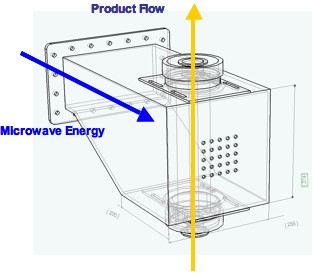About Radio Frequency / Microwave Heating
Microwave and radio frequency heating technology pass electromagnetic waves through a material causing its molecules to vibrate, thereby depositing heat through the entire volume at a uniform rate. With conventional heating the surface heats first and the heat conducts inward (often very slowly). Radio frquency and microwave technology can be combined with conventional heating and drying.
Radio frequency (RF), dielectric or microwave heating is widely used as it allows the temperature or state of a material to be changed rapidly and precisely - giving simplified process control, reduced processing times, and consistent quality.
The ability to deposit heat throughout a volume of product avoids the need for large temperature differences and so can reduce problems such as burning, flavour changes, protein denaturing, cracking and crust-forming.
In drying applications energy is concentrated in the wetter areas reducing overdrying and preventing energy being wasted.
The permittivity of a material shows how a material interacts with an electric field. As permittivity can be a strong function of the moisture content and temperature of the material, as well as the frequency of the electric field, it is often beneficial to measure or model the permittivity of a material in order to produce the required heating profile.
For a list of application notes and studies contact Microwave New Zealand Ltd.
